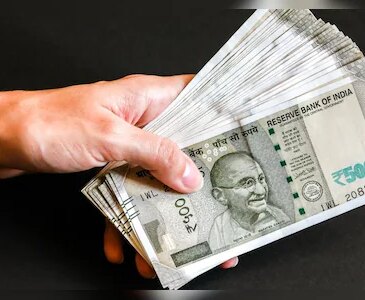Unlock the White House Watch newsletter for free
Your guide to what Trump’s second term means for Washington, business and the world
We all knew Donald Trump believes the security burden borne by America is unfair and that other countries have been ripping it off for years on trade and defence. It has been more surprising to find the re-elected president’s close aides also saying that the pre-eminent global role played by the US dollar is not the “exorbitant privilege” it was termed by Valéry Giscard d’Estaing as France’s finance minister in the 1960s, but an exorbitant burden. Now, one of the many huge questions about Trump’s second term is whether what Kenneth Rogoff calls “the Pax Dollar era” might be coming to an end.
A professor of economics at Harvard and former chief economist at the IMF, Rogoff is best known for This Time is Different, a fine book on financial booms and busts through the ages that he co-authored in 2009 with his colleague Carmen Reinhart. That work should by now have cemented its four-word title in investors’ minds as a sell signal whenever it is heard, though such is the power of wishful thinking that it probably hasn’t.
Rogoff’s new book, Our Dollar, Your Problem, also takes an historical approach to global finance, albeit over seven decades rather than eight centuries, and carries a timely warning. The sharp sell-off of US Treasury bonds following Trump’s April 2 announcement of America’s highest tariff wall for a century confirmed Rogoff’s view that the recently prevailing belief that real interest rates will be “lower forever” is a dangerous myth. For he sees America’s, and hence the dollar’s, “Achilles heel”, as being the country’s $36tn stock of federal debt and the associated danger that a rising interest burden could lead it towards a fiscal crisis.

This well-written, often surprisingly lively book reminds us of two forms of continuity. One is that this is not the first time a Washington administration has believed “all foreigners are out to screw us and it’s our job to screw them first”. Those were the words of John Connally, President Richard Nixon’s Treasury secretary, in 1971 when he and his boss were bringing an end to the Bretton Woods exchange-rate system that had pegged currencies to the dollar and gold since 1944, and briefly imposed a 10 per cent tariff on imports until a new currency agreement was reached.
Connally is also the source of the phrase Rogoff has chosen for his title. What he meant was that America would do whatever it wished with its currency, and the world would just have to live with the consequences. For another consistent reality has been that the dollar has been the world’s dominant reserve, trading and investment currency since 1945. Some 90 per cent of all foreign exchange transactions involve the dollar on one side or the other; the US economy accounts for about a quarter of global output, but 60 per cent of foreign-exchange reserves are held in dollars.
A series of chapters explains why in turn the Soviet Union (though never really the rouble), Japan’s yen, Europe’s euro and China’s renminbi have all been speculated upon as potential rivals, but all have so far failed to topple the mighty dollar. The greenback’s sheer convenience, thanks to the unmatched liquidity of US financial markets, a widely held faith in the rule of law in America and the trustworthiness of its institutions, and the country’s global role in military security and in financial oversight have all kept it supreme.
In recent years, America’s increasing use of financial sanctions to punish or put pressure on adversaries, most dramatically on Russia following the invasion of Ukraine in 2022, and the associated extraterritorial use of US law, has led to some efforts to diversify away from the dollar by setting up new payments mechanisms and even by dreaming up new shared currencies, such as one discussed by the “Brics” group. China has worked particularly hard to make itself less vulnerable to US sanctions in the event of a future conflict by building its own payments system. But none of this so far looks likely to weaken the dollar’s sway, at least for as long as China makes it hard to trade the renminbi or convert it into other currencies.
Instead, Rogoff’s conviction is that although other currencies such as the euro and renminbi have a part to play as secondary reserve assets, the real threat to the dollar lies within America itself. Principally, it lies in what he sees as the country’s insouciant, or perhaps reckless, attitude to its rising level of public debt, combined with a potential undermining of institutions such as the Federal Reserve as and when inflation revives and political pressures to interfere rise again, as they did in the Nixon era.
Had Our Dollar, Your Problem not gone to press soon after the November presidential election, it would no doubt have added a very immediate concern about the inflationary impact of the tariff wall that Trump is establishing and of the trade war he is conducting with China. The sell-off in US Treasuries and fall in the dollar following “liberation day” owed a lot to a loss of trust in American assets by foreign holders but also to rising expectations of inflation thanks to the direct impact of import taxes and the potential for supply-chain disruptions.
In This Time is Different, Rogoff and Reinhart drew a great deal of attention, and some criticism, by their observation that countries’ economic growth rates tended to be slower if their public debts exceeded 90 per cent of GDP. This was not intended to indicate a direct causal link, but rather that beyond a certain size public debts tend to divert resources away from productive uses while also causing lenders to demand higher interest rates. America’s gross public debt now exceeds 120 per cent of GDP, giving it the fourth-highest such debt among rich countries after Japan, Greece and Italy.
The true “exorbitant privilege” of the dollar has been that interest rates on US Treasuries have been lower than they might otherwise have been thanks to the world’s thirst for dollar assets. While some Trump advisers complain that a strong dollar made US exports less competitive, they now need to be careful what they wish for, as faith in American assets among the foreigners who hold about 30 per cent of US Treasuries can fade quickly, sending interest rates spiralling damagingly higher.
Rogoff’s sobering but convincing conclusion is that “if runaway US debt policy continues to crash up against higher real interest rates and geopolitical instability, and if political pressures constrain the Federal Reserve’s ability to consistently tame inflation, it will be everyone’s problem”. We may soon be quoting Ernest Hemingway about the two ways you go bankrupt: gradually, then suddenly.
Our Dollar, Your Problem: An Insider’s View of Seven Turbulent Decades of Global Finance, and the Road Ahead by Kenneth Rogoff Yale University Press £25/$35, 360 pages
Bill Emmott is a former editor of The Economist and now chairs the International Institute for Strategic Studies
Join our online book group on Facebook at FT Books Café and follow FT Weekend on Instagram and X



